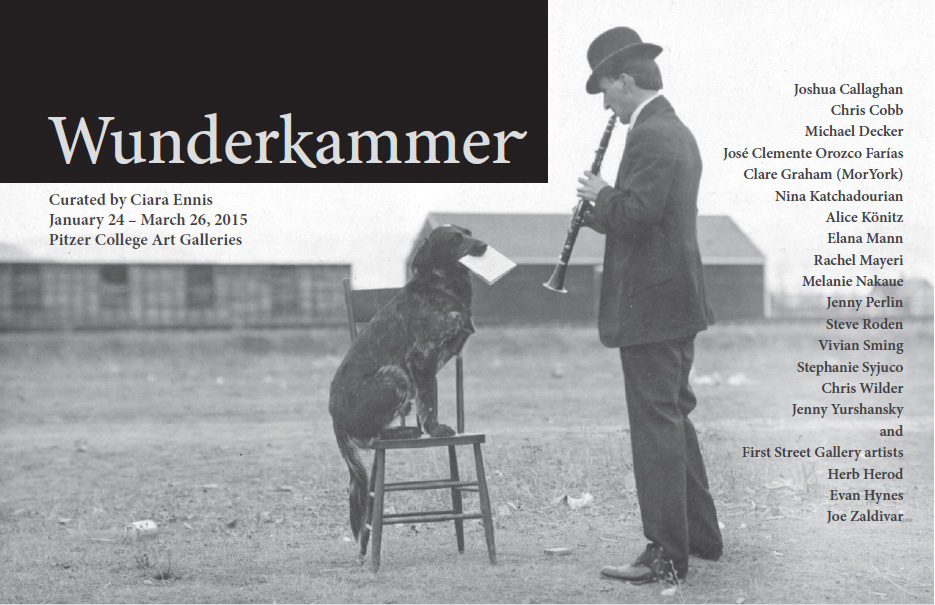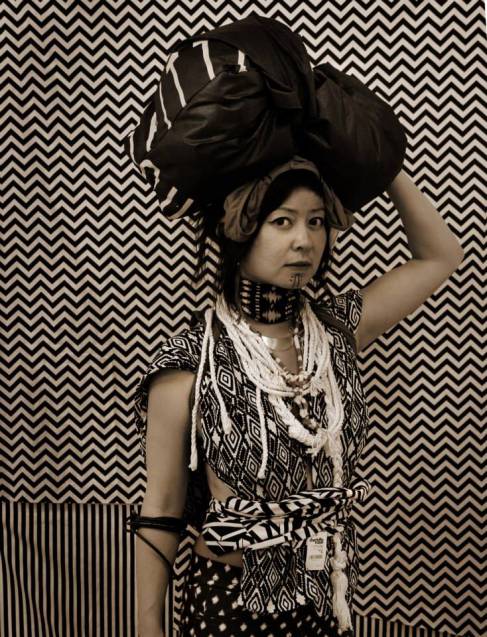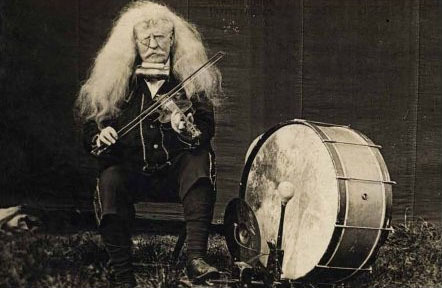
Wunderkammer
January 24–March 26, 2015
Nichols Gallery, Broad Center
Curated by Ciara Ennis

Joshua Callaghan, Chris Cobb, Michael Decker, José Clemente Orozco Farías, Clare Graham (MorYork), Nina Katchadourian, Alice Könitz, Elana Mann, Rachel Mayeri, Melanie Nakaue, Jenny Perlin, Steve Roden, Vivian Sming, Stephanie Syjuco, Chris Wilder, Jenny Yurshansky and First Street Gallery Art Center artists: Herb Herod, Evan Hynes, Joe Zaldivar
In contrast to current museological models that derive their practices from their nineteenth century counterparts, the wunderkammer—generally regarded as a prototype for the first museums—can provide an alternative. Distinguished by their eclectic and all-encompassing collections, these early museums celebrated heterogeneity and difference as accolades—objects collected ranged from functional everyday artifacts to biological anomalies. Their interdisciplinary and all-inclusive practice resulted in a non-hierarchical approach; value was assigned according to the object’s polyvalent signifying power, its ability to be endlessly interpreted rather then categorically determined. As their name suggests, these museums championed wonderment as a vital tool for knowledge acquisition.
By providing a different rubric, these early models can offer an alternative lens to critique prevailing exhibitionary practices by calling attention to the codes and conventions of current display strategies, chronological placements, and exhibition typologies. By interrogating these classificatory norms it is possible to examine how these taxonomic structures dictate behavior in other areas of our lives—labor, leisure, culture—and by extension their impact on how we self identify or are identified by others—race, class, sexuality, gender. As a result, the wunderkammer model provides an opportunity to examine how knowledge is produced and disseminated, controlled and manipulated.

Through the objects and installations, the artists and practitioners in the exhibition explore these ideas through the production of archives—fictional and real; via unique and eclectic cosmologies; by privileging the mundane and forgotten above the conventionally celebrated; the historical as a part of the contemporary; and the nonprofessional versus the established. Furthermore, through the use of specific representational systems these artists reveal and critique established ideological constructs that govern issues of inclusion and exclusion within the contemporary museum.
Wunderkammer is a set of connected exhibitions at Pitzer College’s Nichols Gallery and Barbara Hinshaw Gallery, and the First Street Gallery Art Center of the Tierra del Sol Foundation.
 WORLD IS WATCHING – MANIFESTO
WORLD IS WATCHING – MANIFESTO